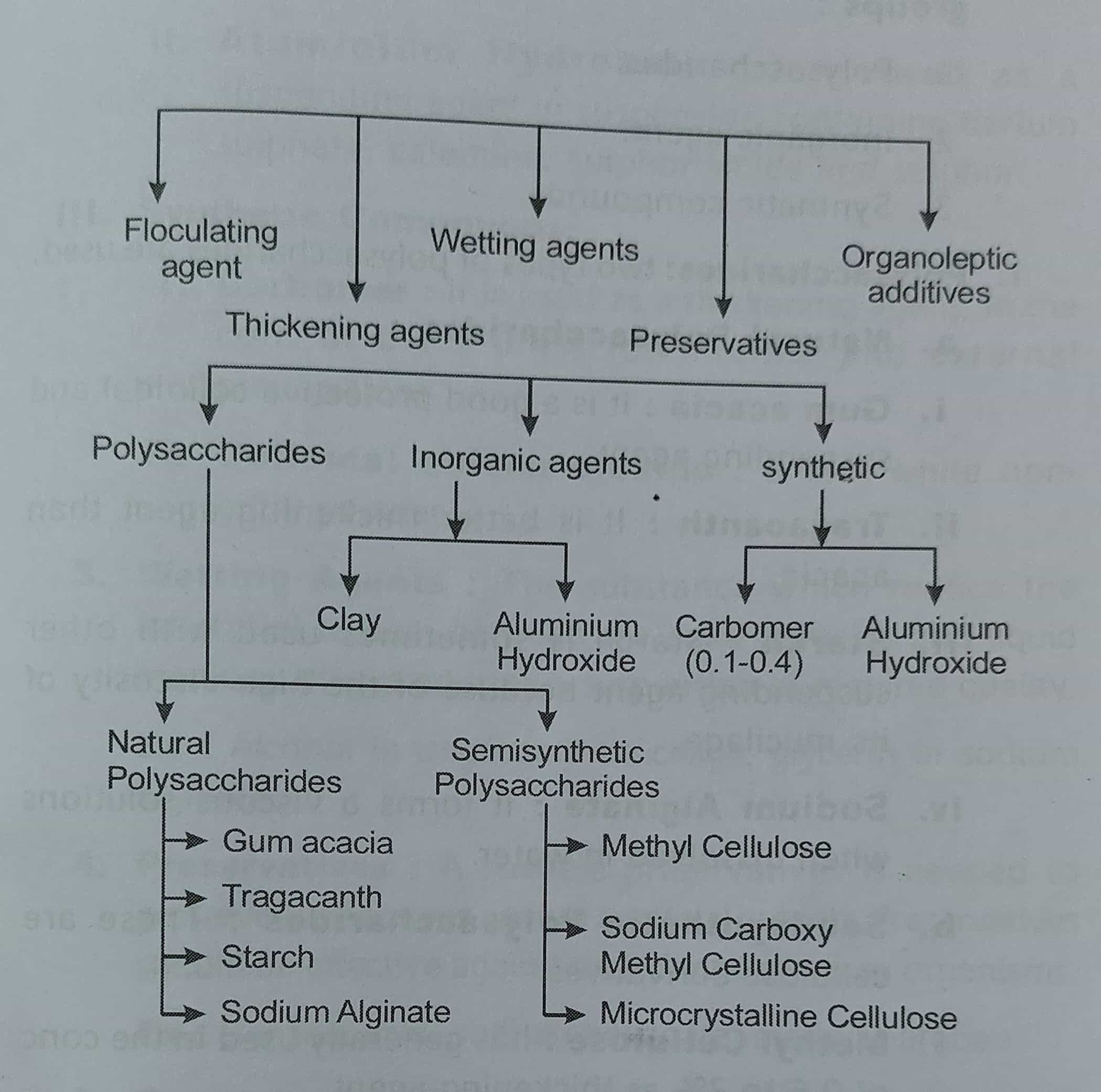Suspension are the biphasic liquid dosage form of medicament in which finely divided solid particles ranging from 0.5 to 5.0 microns are dispersed in a liquid (or) semisolid vehicle.
Table of Contents
Good qualities of a suspensions
- It should settle slowly and should be readily redispersed on gentle shaking of the container.
- It should be chemically Inert.
- The suspension should pour readily and evenly from its container.
- It should be free from large particles, which spoil the appearance, gives a gritty taste to preparation, and cause irritation to tissues.
- The suspended particles should not form a cake.
Formulation of Suspension

- Flocculating Agent: In suspension, the solid particles are well dispersed in the dispersion medium, that is a vehicle. This can be improved by adding surfactants that act as flocculating agents. Ex: Sodium lauryl sulfate tweens, spans, and carbowaxes.
- Thickening Agents: These are hydrophilic colloids that form colloidal dispersions with water and maintain the viscosity of the continuous phase.
Thickening agents are classified into three major groups:
- Polysaccharides.
- Inorganic agent.
- Synthetic compounds.
Polysaccharides: two types of polysaccharides are used
a. Natural Polysaccharides:
i. Gum acacia: It is a good protective colloidal and suspending agent.
ii. Tragacanth: It is a better thickening agent than acacia.
iii. Starch: Starch is sometimes used with other suspending agent because of the high viscosity of its mucilage.
iv. Sodium Alginate: It forms a viscous solution when dissolved in water.
b. Semisynthetic Polysaccharides: These are cellulose derivatives.
i. Methyl Cellulose: It is generally used in the conc of 0.5 to 2% as a thickening agent.
ii. Sodium Carboxymethyl Cellulose: It is used for oral, external, and parenteral use, in the concentration of 0.25 -1%
Inorganic Agents:
i. Clay: Bentonite and aluminum magnesium silicate is very commonly used as a thickening agent. Bentonite is used in the con. of 2% for external preparations, whereas aluminum magnesium silicate is used in both external and internal preparations.
ii. Aluminium Hydroxide: It is used as a suspending agent in a suspension containing barium sulfate, calamine, sulphonamide, and sulphur.
Synthetic Compounds:
i. Carbomer: It is used as a thickening agent, in the con. of 0.1 0.4% for internal and external preparations.
ii. Colloidal silicon dioxide: It is a white non- gritty powder.
3. Wetting Agents: The substance which reduces the interfacial tension between the solid particles and liquid medium, producing a suspension of the required quality. Ex: Alcohol in tragacanth mucilage, glycerin in sodium alginate.
4. Preservatives: A suitable preservative is needed to preserve suspensions against bacterial growth. Preservatives should be effective against a wide range of microorganisms. Ex: Benzoic acid, sodium benzoate, methylparaben.
5. Organoleptic Additives: Colouring agents, sweetening agents, and flavoring agents are generally used in oral suspensions.
Also read: Identification test for emulsion